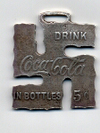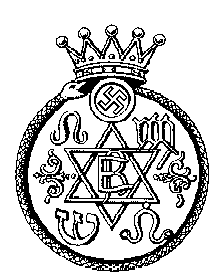


| How to pronounce "Hakenkreuz" from http://rexcurry.net/swastika-hakenkreuz.html On the following linked website was the statement: "Would request all Hindus here in future to refer to the National Socialists (nazi) symbol as "Hakenkreuz", until we find any exception to the indications given above (that is, if and until we find that it was called something other than "Hakenkreuz" in nazi Germany)." [and what follows contains added images and links] http://forums.bharat-rakshak.com/viewtopic.php?f=1&t=5225&start=440 Pronunciation is easy: 0. Das in Das Hakenkreuz as in the English verb does. (Now, it's an 's' at the end, don't be all American and say doezzzz.) 1. Ha in Das Hakenkreuz as in hat 2. The en in Das Hakenkreuz as in "an" in "an apple". It's not like in "Anne apple", but the unstressed "There's an apple". Now prefix the k to it, to get: Das Hakenkreuz 3. The eu in German is pronounced as "oi". E.g. like when you go "Oi, you there." It's a very short o in "oi". 4. And the z in German is generally "ts". (Stress the ssss so they know you are speaking German and not saying the English z.) 5. So now the kreuz in Das Hakenkreuz sounds like kroitss. And this is important: it's a throaty 'r' in modern German. (60s and 70s German rolled it closer to the front/middle of the mouth - this can be your back-up plan.) - Don't roll it like the Irish with their "girrrrrrl". - Don't ignore it like many Australians do, who say something closer to "sista" than "sister". - Don't soften it into invisibility like the English "r" (who tend to pronounce "it's a girl" like "It's a guhl" and say "forget it" as "fuh-get it"). - Americans have no real 'r' either but unlike the Brits who have close to nothing there, Americans insert a special sound in place of what we read on paper as an 'r'. Don't make that sound either. The German "kr" is like clearing your throat, it's guttural here. Like you just tore something. Sounds pretty unattractive until you get used to it and then forget about it. Keep practising the dreadful words "Das Hakenkreuz", until it rolls off your tongue like you're a native German-speaker. So now, when some twat calls it a Swastika, you say: "Get it right. It is called das *Hakenkreuz*. That's what the nazis and other Germans called it." http://rexcurry.net/swastika3swastika.jpg And, if you want, you can memorise those idiot nazi nationalist song lines and quotes from mein kampf and then rattle it off to them as proof. (I wouldn't. But you might want to.) http://rexcurry.net/swastika3clear.jpg And if they give excuses like "Swastika is the *English* name for it", just tell them that you weren't aware that the English were also nazis flying the nazi symbol - else why do they have a separate word for it? See the work of the symbologist Dr. Rex Curry (author of "Swastika Secrets"). http://rexcurry.net/book1a1contents-swastika.html Another swastika picture http://rexcurry.net/fascism-third-reich-hitler-nazism-swastika456.jpg Then: say that Swastika is Samskritam and the name of a Dharmic (Hindu, Buddhist) symbol that is unrelated to the Hakenkreuz except for being of a similar basic shape. And that since Swastika is NOT an English word either, and since English is a Germanic language, they should sooner opt for the German word "Hakenkreuz" itself, than reach for a word in distant Samskritam, if they're going to be using foreign terms anyway. Especially since the item being referred to is the *German* nazi symbol and not the Dharmic Religious Symbol in Samskritam. |